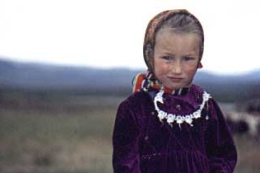The day to day life of a Komi man consisted of wearing an underwear, trousers and a smock. During special occasions, they wore a sateen or silk shirt, trousers and a cloth made from caftan cloth. During winter, they wore felt or leather boots and coats made from sheepskin. Traditionally, Komi women wore a sarafan (long dress) and a shirt. Their mode of dressing varied, depending on whether they were single, married or divorced. The color and type of fabric used for the dresses and the shape of the head wear is what mainly differentiated the women.
Komi is the official language spoken in the northeastern part of Russia. It is a Uralic language. It is closely related to the Udmurt language. Approximately 350,000 people speak this language. There are different dialects in the Komi language. This includes the Komi-Zyrian dialect and the Komi-Yazva dialect. A person speaking one dialect may not necessarily fully understand other dialects. The Komi-Zyrian dialect is widely spoken and forms the literal basis of the Komi Republic. The Komi-Yazda dialect is spoken by a small group of isolated Komis. The writing system used was Old Permic script. This script had some similarities to Greek and Cyrillic scripts. This was later replaced by the Russian alphabet in the 16th century. In the 1920s, the Molodtsov alphabet, which was derived from the Cyrillic alphabet was used. This was changed to the Latin alphabet in the 1930s, before the Russian alphabet started being used in the 1940s. There are 7 vowels in the Komi alphabet.
The daily life of the Komi people consisted of hunting, fishing, rearing cattle and agriculture. The Northern Komi people practiced reindeer hunting, which they borrowed from the Nenets. Towards the end of the 19th century, they were one of the biggest reindeer herders in Northern Europe. An average herd had about 2,000 reindeer. Traditionally, the Komi lived along river banks, in houses which had a raised wooden frame. Meat, was one of their favorite delicacies. This was obtained from the animals they hunted, fish and fowls. They would also gather a variety of fruits, which they ate fresh or preserved. Most Komi are members of the Russian Orthodox church.
